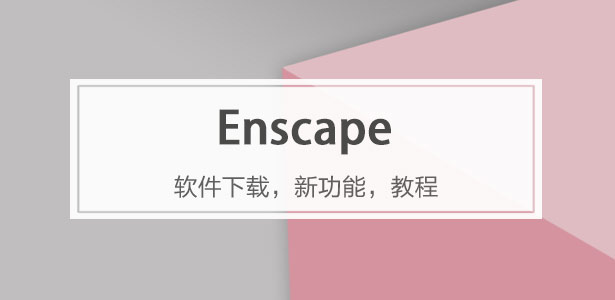
下載app免費領(lǐng)取會員




設計單位? 成都合造建筑設計有限公司
項目地點? 四川攀枝花鹽邊縣
建設時間? 2024年4月
建筑面積? 1800平方米
本文文字由設計單位提供。
項目坐落于攀枝花市聯(lián)合村的一處遠山之地,建筑是在停用的村委會和小學校的基礎上進行拆建改建的。
The project is located in a remote mountainous area called Lianhe Village, Panzhihua City; the building is a renovated and reconstructed structure from a disused village committee and primary school.
聯(lián)合村同大多數(shù)鄉(xiāng)村一樣,在歷史的進程中,都不可避免地遭受了空心化之痛。來到現(xiàn)場,時間仿佛停留在了上一個時代,村官辦公室的忙碌和學生的朗讀猶在眼前耳邊,但年久失修的簡易房屋卻已然成為危房。這似乎是時間留于此處的一片遺跡,既是物質(zhì)性的,也是文化性的。
Like most villages, Lianhe Village has inevitably suffered from the pain of hollowing out in the course of history. Upon arrival at the site, it seems as if time has stood still in the era of the previous village. The bustle of the village official's office and the reading of students are still vivid in my mind and ears, but the simple houses that have been in disrepair for years have become dangerous buildings. This seems to be a relic left behind by time, both materially and culturally.




我們的建造便是在這片遺跡之上開展。
Our construction is carried out over this relic.
在新的鄉(xiāng)村振興背景下,這里將成為當?shù)卮蛟臁昂兔类l(xiāng)村”計劃中的啟動區(qū)。建筑由廚房餐廳、博物館、戶外會客廳、圖書館四個公共空間組成,分別對應了原建筑中的教師校舍、村委會辦公室、村民曬谷場、小學教室三棟一壩的建筑空間。
In the context of the new rural revitalization initiative, this area will serve as the starting point for the local plan to create a "harmonious and beautiful countryside". It comprises four public spaces: a kitchen restaurant, a small local museum, an outdoor living room, and a library. These correspond to the architectural spaces of the former buildings, namely the teachers' dormitory, the village committee office, the villagers' grain drying yard, and the primary school classroom, which were arranged in a "three buildings, one dam" configuration.




建造的策略來自現(xiàn)場所建立的直覺,即在遺跡中建造。我們希望新的建造是歷史的一種延續(xù),而非拋棄,即便舊的建筑已無法適應新的功能。我們保留了現(xiàn)場尚能使用的建筑結(jié)構(gòu),將舊建筑中危房的結(jié)構(gòu)板拆除,保留其原先磚混結(jié)構(gòu)的墻基。新的建筑結(jié)構(gòu)為木結(jié)構(gòu)體系,建造在原有結(jié)構(gòu)墻基之間的的空白處,形成完整獨立的新體系。
The strategy of construction stems from the intuition established on site, which is to build over the relics. We hope that the new construction is a continuation of history, rather than a rejection, even if the old buildings are no longer suitable for new functions. We have retained the usable building structures on site, but removed the structural panels of the dangerous buildings in the old buildings, while preserving their original brick-concrete structure wall foundations. The new building structure is a wooden structure system, constructed in the blank spaces between the original structural wall foundations, forming a complete and independent new system.





于是,當完成建造之時,整個建筑便擁有了兩套相互交織的軸線體系:一套是新建筑的木結(jié)構(gòu)體系,它支撐了整個建筑,并為室內(nèi)功能提供了自由空間劃分的可能性;而另一套軸線來自于老的磚混結(jié)構(gòu)的墻基,它同樣參與到了室內(nèi)功能的格局,成為功能劃分的一項重要線索,同時也給歷史和記憶留出空間。
Therefore, upon completion of construction, the entire building will have two sets of intertwined axis systems: one is the wooden structure system of the new building, which supports the entire building and leaves room for the possibility of free space division for indoor functions; the other set of axes comes from the old brick-concrete structure wall foundations, which also participates in the layout of indoor functions, becoming an important clue for functional division, while also leaving space for history and memory.
歷史與現(xiàn)在的兩套軸線,猶如在平行時空中對話,交織在一起。
The two sets of axes, representing history and the present, are like a dialogue in parallel space-time, intertwined and constructed in a place where you are within me and I am within you.




在主體建筑之外,我們還在場地的縫隙處建造了兩座清水混凝土的小塔,分別是“握手塔”和“迎客塔”。新建筑的木結(jié)構(gòu)與舊建筑的磚混結(jié)構(gòu)在“握手塔”實現(xiàn)結(jié)構(gòu)的交匯與搭接。“迎客塔”位于山頭的邊沿,面向村口,作迎客之勢,同時也成為半戶外會客廳薄膜屋頂?shù)膹埨^點。
Beyond the main building, we constructed two small towers made of as-cast concrete at the gaps in the site, named "Handshake Tower" and "Welcome Tower". The wooden structure of the new building intersects and overlaps with the brick-concrete structure of the old building at the "Handshake Tower". The Welcome Tower, located at the edge of the hilltop facing the entrance of the village, serves as a welcoming gesture and also functions as the tension anchor point for the membrane roof of the semi-outdoor living room.







整個建筑的清水混凝土和土建部分均由當?shù)卮迕窠ㄔ欤F(xiàn)代木結(jié)構(gòu)和鋼膜結(jié)構(gòu)的部分則由工廠定制生產(chǎn)后現(xiàn)場組裝。傳統(tǒng)的手造施工與工業(yè)體系下的新型建造再次交織,你中有我,我中有你。
The entire building's exposed concrete and civil engineering parts were constructed by local villagers, while the modern wooden structure and steel membrane structure parts were customized and produced in a factory before being assembled on site. Traditional handmade construction and new construction under the industrial system are once again intertwined, with each incorporating elements of the other.













完整項目信息
項目名稱:在遺跡中的建造 | 聯(lián)合村社區(qū)中心
項目地點:四川攀枝花鹽邊縣聯(lián)合村
建成狀態(tài):建成
設計時間:2022年10月
建設時間:2024年4月
建筑面積:1800平方米
設計單位:成都合造建筑設計有限公司
設計單位聯(lián)系方式:363709965@qq.com
主創(chuàng)建筑師:徐浪
設計團隊完整名單:徐浪、喬僑、邱梟楓、石佳馥伊、李健、雷韻、易曉典(實習)、王逸倫(實習)、竇怡璇(實習)
規(guī)劃、策劃、運營顧問:上海純粹建筑設計有限公司
水電設計:成都高新區(qū)天翊專業(yè)設計工作室
結(jié)構(gòu):欒櫨構(gòu)造設計事務所
施工:四川凌啟軒集成房屋有限公司+村集體施工隊伍
木結(jié)構(gòu)加工:遼寧金柏勝木結(jié)構(gòu)科技有限公司
業(yè)主:鹽邊縣村集體
攝影師:存在建筑-建筑攝影、徐浪
版權(quán)聲明:本文由成都合造建筑設計有限公司授權(quán)發(fā)布。歡迎轉(zhuǎn)發(fā),禁止以有方編輯版本轉(zhuǎn)載。
投稿郵箱:media@archiposition.com
本文版權(quán)歸腿腿教學網(wǎng)及原創(chuàng)作者所有,未經(jīng)授權(quán),謝絕轉(zhuǎn)載。

上一篇:政策新聞 | 關(guān)于江西電力職業(yè)技術(shù)學院教培大樓等項目達到南昌市一星級綠色建筑標識標準的公示
下一篇:BIM建筑|大家的風景:錦堤驛改造更新 / 垣建筑設計工作室






推薦專題









































